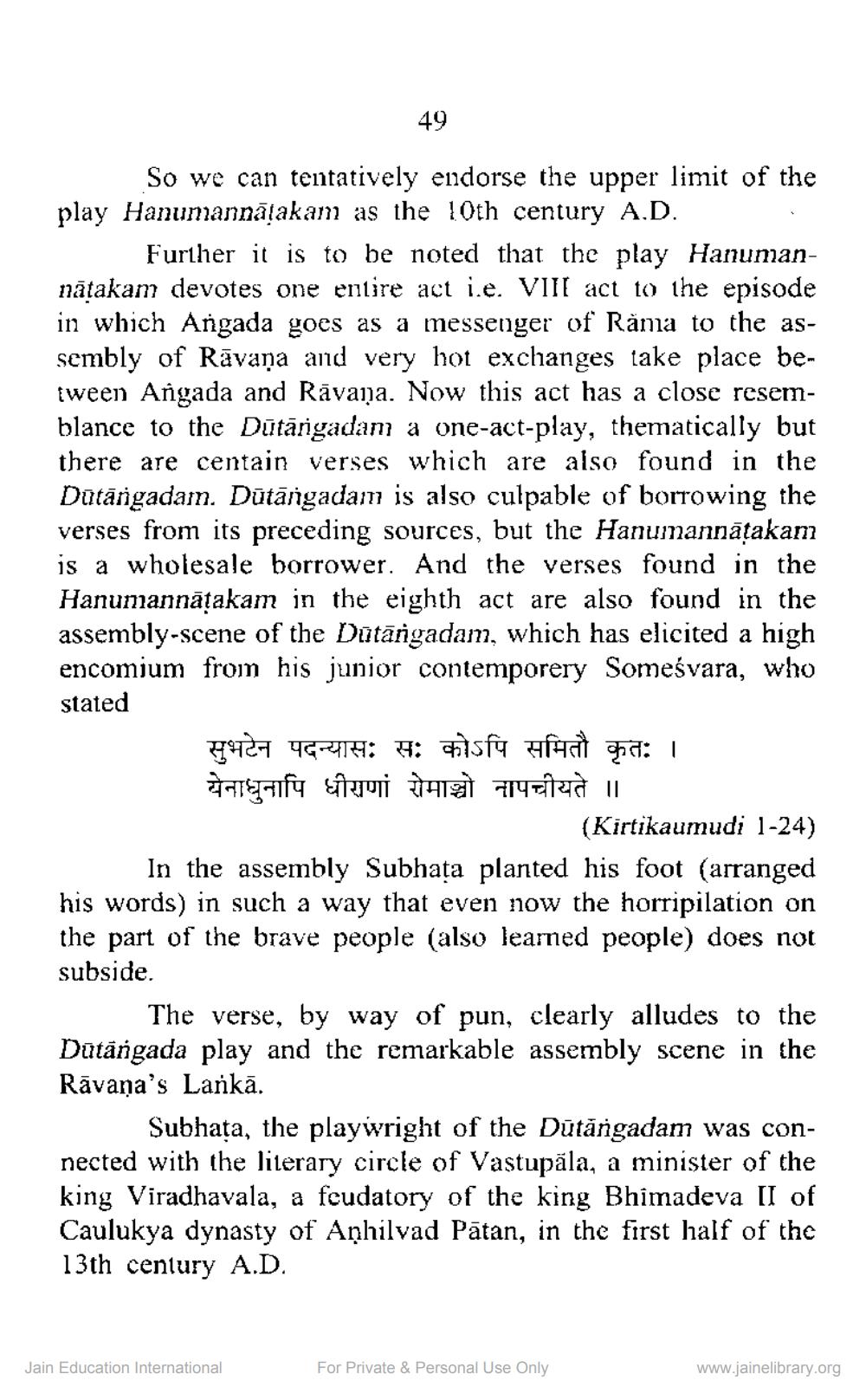Book Title: Hanumannatakam Date and Place of Its Origin Author(s): Vijay Pandya Publisher: ZZ_Anusandhan View full book textPage 4
________________ 49 So we can tentatively endorse the upper limit of the play Hanumannālakam as the 10th century A.D. Further it is to be noted that the play Hanumannatakam devotes one entire act i.e. Vill act to the episode in which Angada goes as a messenger of Råma to the assembly of Rāvana and very hot exchanges take place beiween Angada and Rāvana. Now this act has a close resemblance to the Dūtāriyadan a one-act-play, thematically but there are centain verses which are also found in the Dūtārigadam. Dūtāngadam is also culpable of borrowing the verses from its preceding sources, but the Hanumannātakam is a wholesale borrower. And the verses found in the Hanumannāțakam in the eighth act are also found in the assembly-scene of the Datangadam, which has elicited a high encomium from his junior contemporery Someśvara, who stated सुभटेन पदन्यासः सः कोऽपि समितौ कृतः । येनाधुनापि धीराणां रोमाञ्चो नापचीयते ।। (Kirtikaumudi 1-24) In the assembly Subhata planted his foot (arranged his words) in such a way that even now the horripilation on the part of the brave people (also learned people) does not subside. The verse, by way of pun, clearly alludes to the Datārgada play and the remarkable assembly scene in the Rāvana's Lankā. Subhata, the playwright of the Dūtăngadam was connected with the literary circle of Vastupāla, a minister of the king Viradhavala, a feudatory of the king Bhimadeva II of Caulukya dynasty of Anhilvad Pātan, in the first half of the 13th century A.D. Jain Education International For Private & Personal Use Only www.jainelibrary.orgPage Navigation
1 2 3 4 5 6 7 8 9
